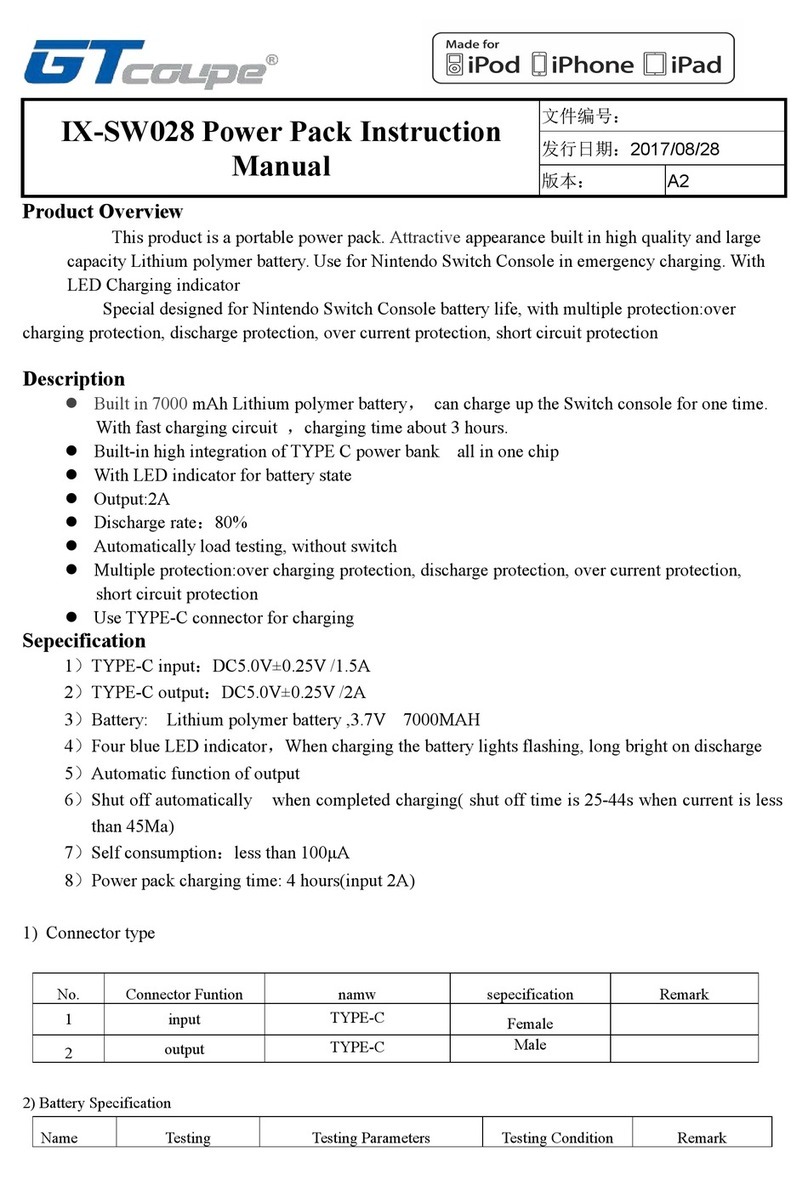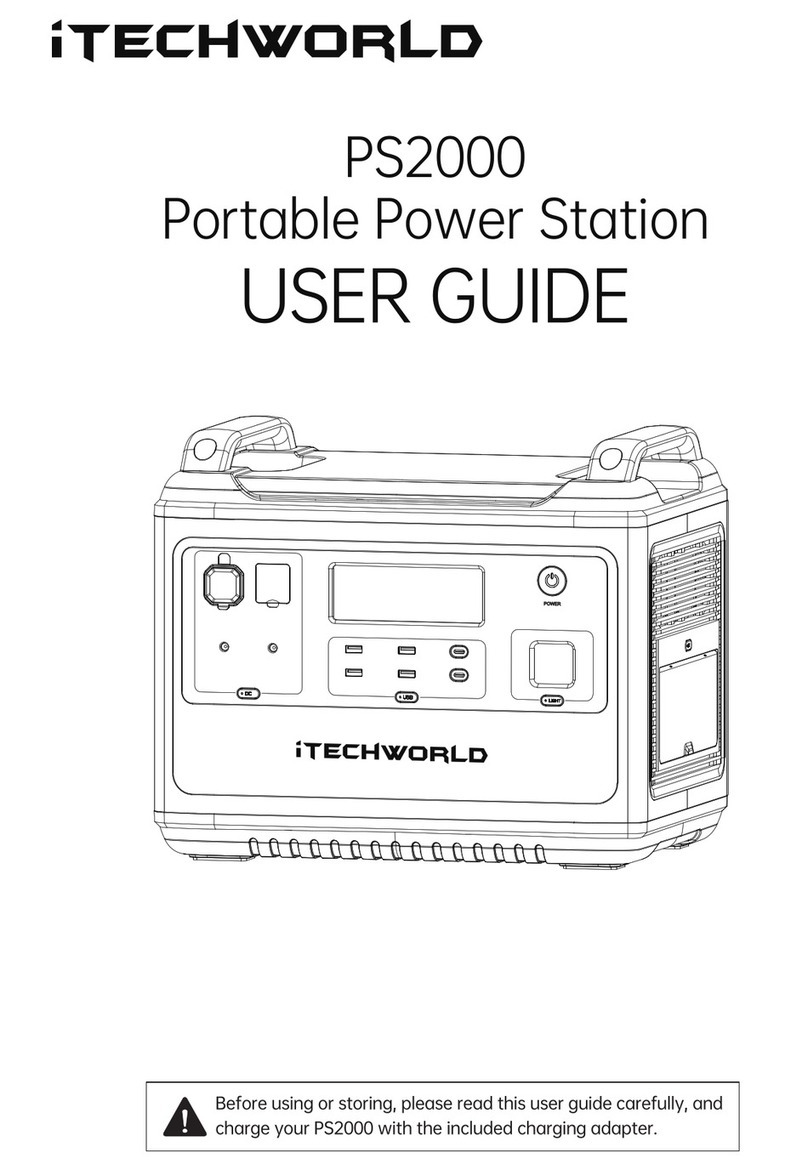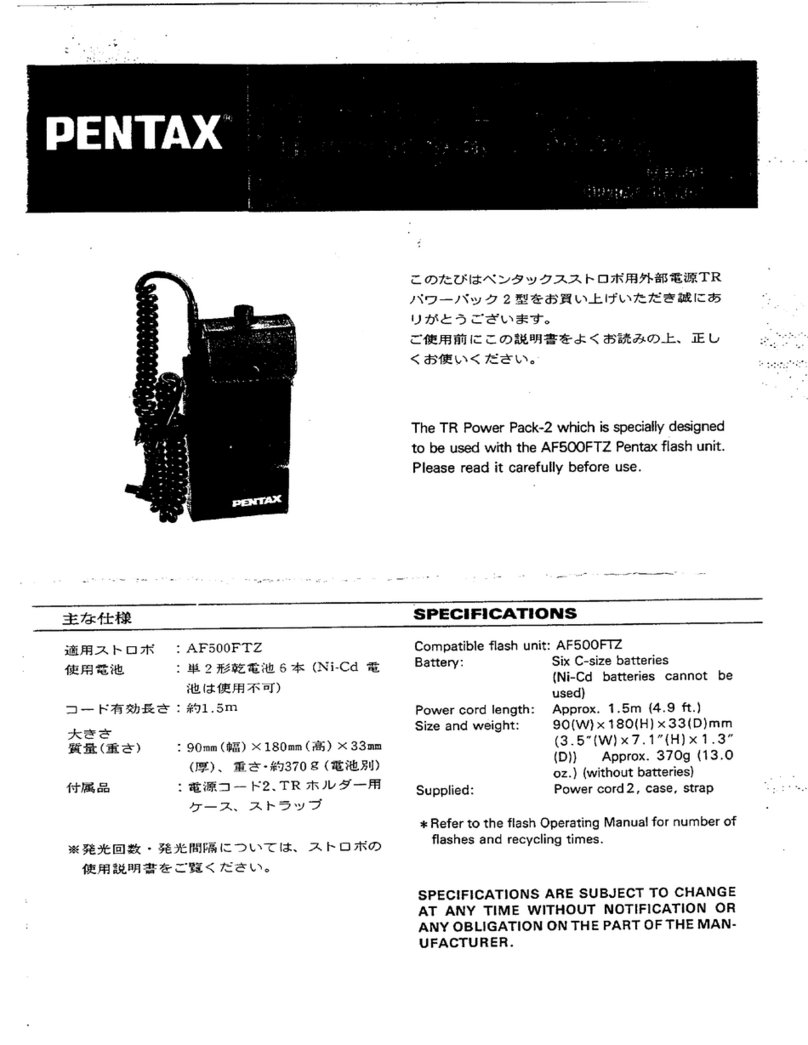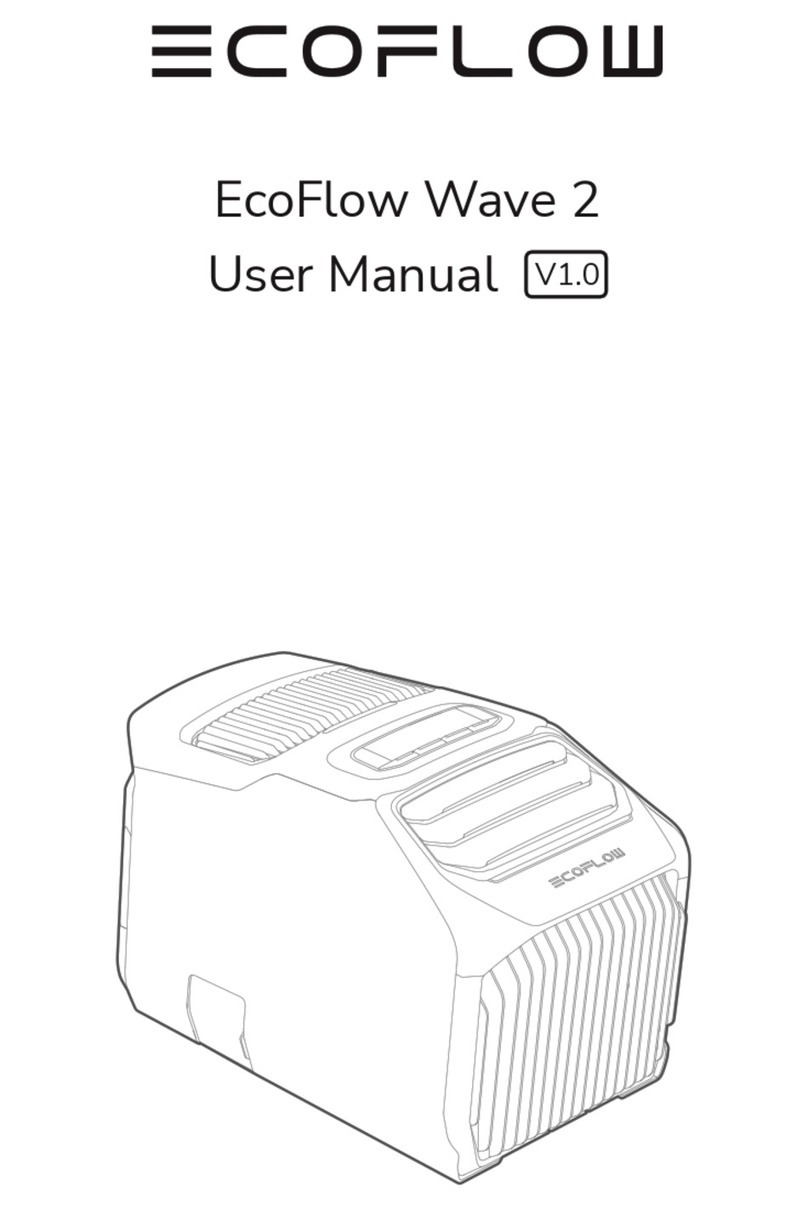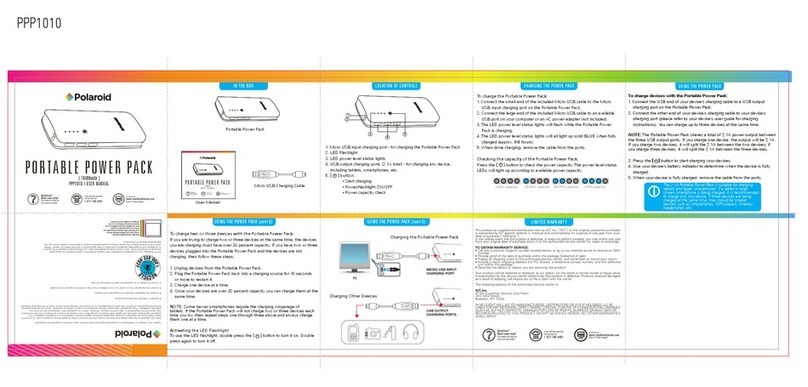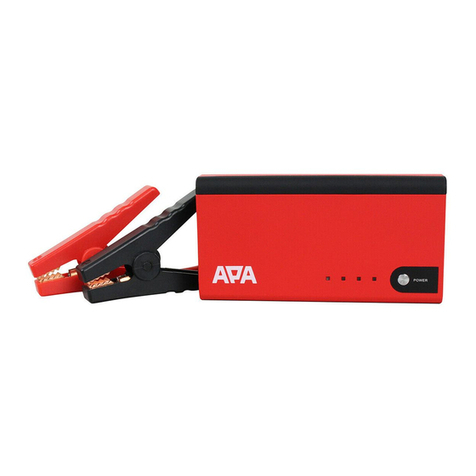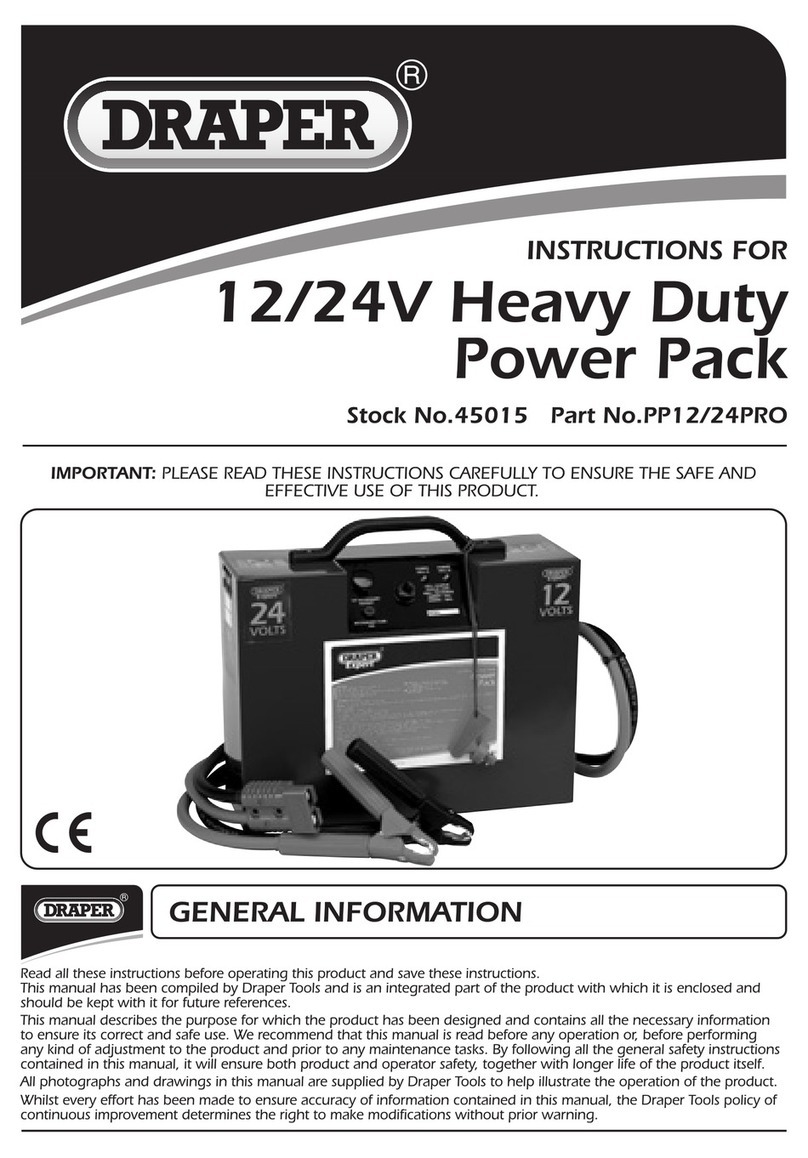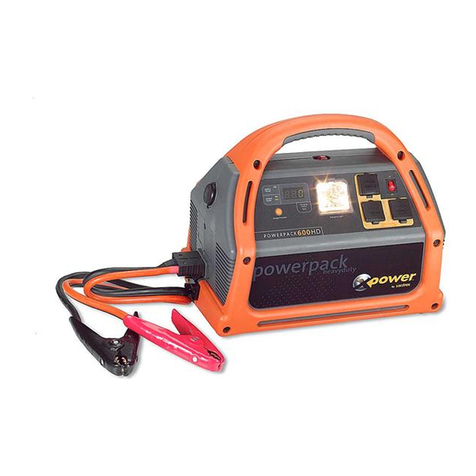
PowerQuick Powered Ascender (5) PQ500-1 1-Sep-15
Reverse charging is not acceptable. PowerQuick Battery Charger is equipped with a circuit to prevent reverse
charging.
Charge before use.
Do not charge/discharge with more than the specified current.
Do not short circuit the cell/battery.
Do not incinerate or mutilate the cell/battery.
The life expectancy may be reduced if the cell/battery is subjected to adverse conditions, like extreme temperature,
deep cycling, and excessive overcharge/over-discharge.
Store the cell/battery in a cool dry place.
Keep away from children. If swallowed, contact a physician at once.
Avoid using this product during an electrical storm. There may be remote risk of electric shock from lightning.
Use with PowerQuick Ascender only. DO NOT use to power other devices
4.1.Use Instructions
Charging the Battery
Charge the battery using the battery pack provided by PowerQuick
Concepts, Inc with your PowerQuick Ascender. (Figure 1)
Insert the 3-pin plug on the battery charger into the matching receptacle
on the top of the battery. (Figure 2)
Plug the charger into the electrical outlet. The charger is compatible with
110 and 230VAC. Locate the switch on the end of the charger and, using
a ball point pin, move it to the correct setting.
An LED on the end of the charger indicated red for power on, yellow for
charging and green for full charge. When the indicator turns green,
disconnect the battery, and then remove the battery from the charger.
4.2.Battery Warranty
PowerQuick Concepts, Inc. Battery Packs are warranted against defects in workmanship, material and construction for a
period of one (1) year from date of shipment. The warranty period is void if the purchaser does not adhere to storage
instructions specifying both storage time and temperature (a charged battery may be stored up to 1 year at room temperature
68° F), are modified, subjected to abuse, physically damaged when allowed to discharge below 25 VDC, or charged with a
charging device not approved by PowerQuick Concepts, Inc.
If the battery pack is found to be defective it will be replaced at no charge. If, however, it is defective due to misuse as
outlined in this warranty the customer will be so advised and replacement will NOT be issued. The liability of PowerQuick
Concepts, Inc. under the warranty is limited to a replacement of the defective battery pack subject to the conditions as
outlined in this paragraph. The warranty is the exclusive remedy.
THERE ARE NO OTHER WARRANTIES EITHER EXPRESSED OR IMPLIED INCLUDING THOSE OF
MERCHANTABILITY AND FITNESS FOR A PARTICULAR PURPOSE AND SUCH WARRANTY IS LIMITED TO THE
EXPRESS WARRANTY PERIOD. LIABILITY FOR CONSEQUENTIAL OR INCIDENTAL DAMAGES UNDER ANY AND ALL
WARRANTIES ARE EXCLUDED TO THE EXTENT EXCLUSION IS PERMITTED BY LAW. THE SOLE REMEDIES FOR
BREACH OF ANY AND ALL GUARANTEES OR WARRANTIES AND THE SOLE REMEDIES FOR POWERQUICK
CONCEPTS, INC.PRODUCT’S LIABILITY OF ANY KIND WITH RESPECT TO THE PRODUCTS FURNISHED UNDER
THIS AGREEMENT, OR PURSUANT TO THIS AGREEMEN T, SHALL BE LIMITED TO THE REMEDIES PROVIDED IN
THE PRECEDING APPLICABLE PARAGRAPHS HEREOF. IN NO EVENT SHALL POWERQUICK CONCEPTS,
INC.PRODUCT’S LIABILITY FOR DAMAGES WITH RESPECT TO ANY OF THE PRODUCTS FURNISHED EXCEED THE
CHARGES PREVIOUSLY PAID BY CUSTOMER FOR SUCH PRODUCTS.
CUSTOMER AGREES THAT POWERQUICK CONCEPTS, INC.PRODUCT’S SHALL NOT BE LIABLE FOR ANY SPECIAL,
INCIDENTAL, INDIRECT OR CONSEQUENTIAL DAMAGES OR LOSS OF USE, REVENUE OR PROFIT, EVEN IF
POWERQUICK CONCEPTS, INC.PRODUCT’S SHALL HAVE BEEN ADVISED OF THE POSSIBILITY OF SUCH
POTENTIAL LOSS OR DAMAGE.
4.3.Battery Disposal
In accordance with the Environmental Protection Agency Rechargeable Battery Management Act, 42 U.S.C 14301-
14336 (“Battery Act”) rechargeable batteries must be disposed of by recycling. To locate a recycling facility in your



